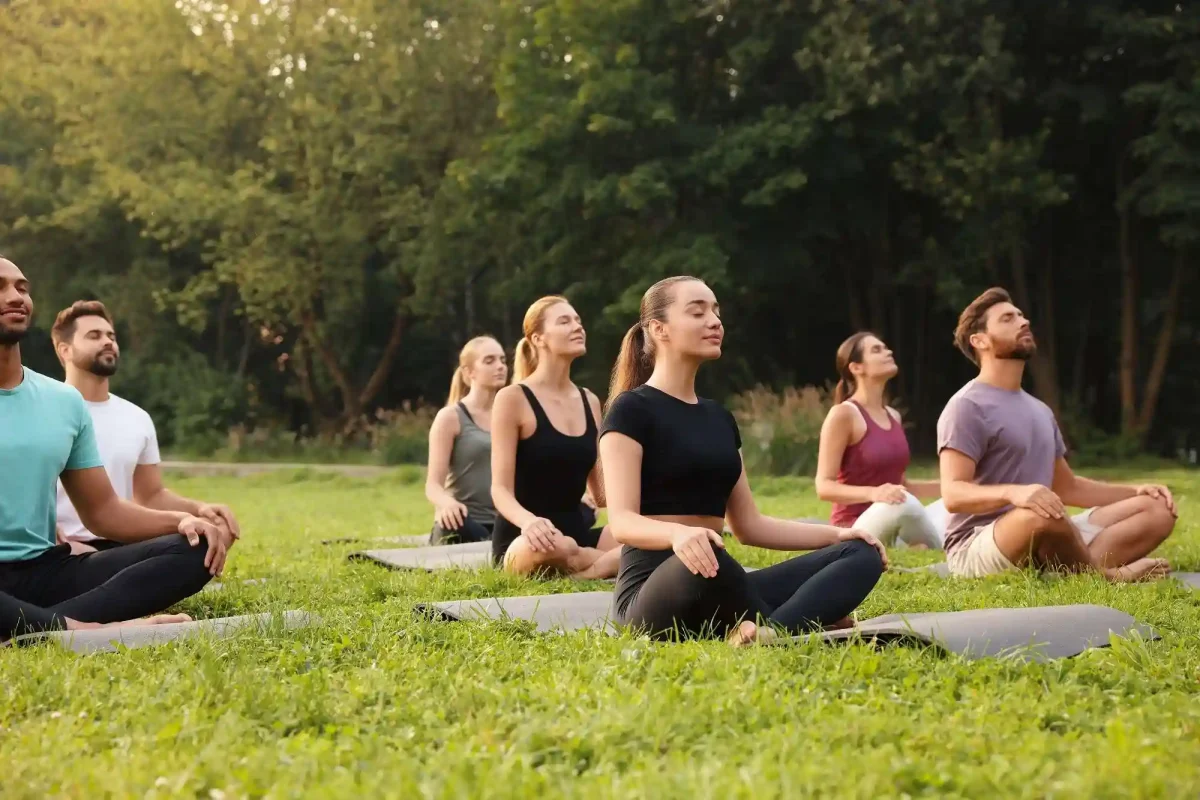
Struggling to Manage Alcohol Cravings?
People choose to drink alcohol because it induces pleasant, relaxing feelings, while also blunting negative ones. However, problems can arise when alcohol use starts to impact mental and physical wellbeing.
Choosing to cut back on alcohol – or eliminating it entirely from your life – can be a positive choice to improve health and relationships. If you or someone you know wants to change their relationship with alcohol, the following information may help you understand how to curb cravings and support you in this decision.

Why Do Some People Experience Alcohol Cravings?
Wanting to drink alcohol from time to time is normal, and people who have a healthy relationship with alcohol are able to control when and how much they drink.
However, experiencing cravings or strong desires to consume alcohol that are difficult to ignore, may suggest alcohol dependence or the early stages of alcohol addiction. 1
Alcohol dependence and misuse can result from the following factors:
-
Repeat Exposure to Alcohol
The National Institute on Alcohol Abuse and Alcoholism (NIAAA) explains how controlled, occasional drinking can shift into alcohol use disorder due to progressive changes in the structure and function of the brain over time.
Alcohol stimulates the brain’s reward system, increasing dopamine levels and helping people relax and enjoy themselves. However, repeated drinking and alcohol misuse can lead to the brain producing less dopamine naturally, and associating feeling good only with alcohol.
What’s more, if someone who misuses alcohol develops an addiction, then stopping drinking may cause unpleasant withdrawal symptoms. These can include physical signs such as pain or illness, and emotional ones such as anxiety and irritability. As a result, withdrawal can fuel the urge to consume more alcohol as a means of relieving symptoms.
-
Internal and External Triggers
Alcohol cravings can be set off by two types of triggers:
-
- External triggers: environmental factors such as people, places, or situations that provide opportunities to drink or remind you of alcohol. Environmental triggers provide temptations to drink, but are more manageable and avoidable than internal triggers. External triggers include social environments, relationship problems, and work stress.
-
- Internal triggers: alcohol cravings can be triggered from within us, from thoughts, emotions, and physical sensations. These triggers can be difficult to detect, and it often feels like desiring a drink just ‘pops’ into the mind.Internal triggers can include factors that lead to drinking in order to feel calmer. This could be chronic stress, or other mental health conditions such as anxiety and depression.
-
-
Social and Environmental Cues
Various social and environmental factors can lead to alcohol craving and misuse.
For example, experiencing trauma, neglect, or abuse as a child can result in a greater risk of developing alcohol use disorder. Additionally, being exposed at an early age to parental alcohol addiction may also contribute to alcohol misuse as an adult. 2,3
Research has shown that people may be more likely to become dependent on alcohol if they have a highly stressful daily life, due to issues such as work-related stress, or racial discrimination. 4
Other social factors which can lead to increased alcohol intake include cultural drinking norms, peer pressure from family or friends, home routines where alcohol is consistently present, and social events in which alcohol is consumed to increase personal confidence.
If you or someone you know wishes to reduce or eliminate alcohol, it may be necessary to consider current lifestyle choices and social groups. This might include assessing how work colleagues or friendship groups influence alcohol consumption.
How to Manage and Control Alcohol Cravings
If you’re experiencing alcohol cravings or an alcohol use disorder and wish to cut down or eliminate alcohol, the following steps can help. However, they are not a substitute for professional help.
Acknowledge Alcohol Cravings in the Moment
Trying to deny that alcohol cravings are happening or fighting against them can do more harm than good. It can even arm cravings with energy, making the problem worse.
So what can be done?
Acknowledging that you’re experiencing an urge to drink, and perhaps an alcohol use disorder, is the first step in managing cravings. When a craving happens, recognise it, acknowledge that you’re having it, and try to pinpoint factors which may have led to it.
Can you detect any patterns? Do you experience an urge to drink when you’re feeling a certain way, for instance, stressed, anxious, bored, or lonely? Do you get cravings in particular places, at specific times, or around certain people?
Take a few moments to consider your answers to these questions. They could tell you a lot about what triggers your urges and how to manage cravings.
Finally, when acknowledging alcohol cravings, remember that these urges are natural and temporary; they will subside without you needing to drink.
Mindfulness-Based Stress Management Techniques

Alcohol cravings can be fuelled by stress, anxiety, frustration – in fact, any uncomfortable feelings that cause someone to seek relief. After considering the triggers to drink and where they come from, you may find stress management techniques such as mindfulness helpful.
Mindfulness allows you to simply observe a craving without acting on it. Urge surfing is a mindfulness technique created in the 1980s to help people with addictions gain control over cravings. 5
The aim of urge surfing is not to eliminate the desire to drink. Instead, it’s to accept it and allow yourself to experience the bodily sensations and thoughts associated with alcohol cravings without acting on them. Like a wave, if you allow yourself to surf your urge to drink, it will eventually crash and dissipate.
Stress management techniques such as deep breathing and muscle relaxation exercises can also help you tune in to the sensations in your body and manage alcohol cravings.
Limit Triggers
A trigger is anything that causes an intense emotional reaction to a certain situation or stimulus. As discussed, there are two types of triggers: internal and external, and people might also experience a mix of both.
Making efforts to identify and understand your triggers, as well as how they’re making your cravings for alcohol worse, may help you manage your desire to drink. Once you identify a trigger and understand how it led to a craving, taking time out to reset might be a wise option. Practice mindfulness and stress management techniques during this time. Consider telling someone you trust about your situation and how they could support you.
Alternatively, if you continue to encounter triggers or they worsen, you might need to consider making changes to your environment. For example, if work stress continues to make you crave alcohol, perhaps consider changing jobs.
Eat Well
Changing patterns around drinking often requires creating new, lifelong habits, including looking more closely at nutrition.
Try to eat a balanced diet including:
- Folic acid-rich foods with Vitamin B9: A lack of vitamin B9 can make you feel tired and lacking in energy. Eat more wholemeal pasta, enriched bread, rice, cereals, vegetables, fruits, nuts, beans, peas for this vitamin.
- Foods that contain Vitamin B1 (thiamine): This vitamin helps the brain to function properly. Vitamin B1 can be found in beans, peas, lentils, brown rice, and fortified breakfast cereals.
- Vitamin B6 foods: This vitamin regulates energy and improves mood and memory. This can be found in fish, poultry, starchy vegetables, and non-citrus fruits.
- Serotonin-rich foods: A diet rich in complex carbohydrates such as whole grains, vegetables, and pulses helps to make the chemical messenger serotonin, which promotes a well-balanced mood, better sleep and lowers alcohol cravings.6
Avoid sugar-laden and ultra-processed foods, as they set off the release of dopamine and could potentially worsen cravings.
Get Enough Sleep
Research shows that untreated insomnia may interfere with recovery from alcohol addiction and can contribute to relapse within the first few months of recovery. Aim for seven to eight hours of sleep per night and talk to your doctor if you are having problems falling asleep or are waking up during the night.7
Focus on the Benefits Rather Than the Problem
During the early stages of cutting down or eliminating alcohol from your lifestyle, you may find it hard to see the benefits.
Yet the benefits are huge, and can include:
- Better mental health
- Improved sleep and energy levels
- No more hangovers
- Better skin
- Weight loss
Longer-term benefits of reduced alcohol consumption include:
- Reduced risk of cancer
- Lower chances of developing physical health problems such as heart disease, stroke, high blood pressure, liver disease, and gut problems
- Improved sexual functioning
If You’re Struggling to Curb Alcohol Cravings

When starting to regain control over your alcohol consumption, try to avoid black-and-white thinking such as “if I can’t manage my cravings, then I’ve failed”. Building a healthier lifestyle can take time, and learning to manage alcohol cravings can be tricky.
If you find that the urge to continue drinking is too much for you to cope with by yourself, you may need specialist support. There’s nothing wrong with seeking professional help; it’s not a sign of weakness or something to feel shame about, but instead shows a willingness to make some changes.
Alcohol use disorder is a complex, often chronic issue with biological, psychological, and social factors. Professional treatment can offer tools, support, and therapies that help people manage triggers, develop coping strategies, and sustain new habits into long-term recovery.
Speak to Your GP
If you’re concerned about your drinking, speaking to your GP is a good first port of call. Your GP can offer advice, as well as signpost you towards treatment options if appropriate.
Plus, if you’re finding alcohol cravings too difficult to manage, your GP may prescribe medication that can help ease alcohol withdrawal symptoms.
Find Local Support Groups
Alcoholics Anonymous (AA) is a 12 Step programme that can support you in your efforts to manage alcohol misuse. These programmes help people maintain sobriety with the aid of social support, as the groups are attended by others in recovery who can offer empathy and understanding.
Consider Therapy
Therapy can be an essential part of treatment for alcohol use disorder. The therapeutic relationship helps to build understanding and awareness of the factors contributing to the addiction.
CATCH Recovery addiction specialists offer a full range of services, from assessments to online and one-to-one therapy sessions. We also help people detox and can provide outpatient and residential treatment options, empowering you to take the first steps towards a life free from alcohol.
Detox & Rehab
Alcohol withdrawal symptoms resulting from chronic alcohol misuse can be difficult to manage as they pose both physical and psychological risks. A professional alcohol and drug treatment programme, which includes medically managed detoxification and rehabilitation, is likely to be necessary.
This will typically start with a screening and one-to-one assessment, before transitioning to medically assisted detox, then counselling, recovery coaching, and group therapy sessions.

Discover Which Treatment Option is Right for You
FAQs
-
How long do alcohol cravings last during recovery?
Research from Drinkaware suggests that alcohol cravings can peak around 60 days after stopping drinking. During this time it’s helpful to practise mindfulness, limit exposure to triggers, and focus on self-care. Seek professional support if needed.
-
Why do alcohol cravings happen, and what triggers them?
Alcohol cravings can be caused by brain changes, habit formation, and both internal and external triggers. We can reduce alcohol craving through awareness, lifestyle choices, and by developing coping skills.
-
How can I stop drinking alcohol every day?
Start by keeping a ‘drinking diary’ to track your consumption of alcoholic drinks, aiming for at least three alcohol-free days each week. Consult a health professional for advice.
-
What are alcohol withdrawal symptoms?
When people who drink heavily or have an alcohol addiction suddenly stop drinking, they may experience withdrawal symptoms. Symptoms can range from mild to severe and include tremors, sweating, high blood pressure, nausea and vomiting, headaches, depression, anxiety, mood swings, insomnia, restlessness, seizures, and hallucinations. It’s important to consult medical advice to manage these symptoms.
-
References
[1] Seo D, Sinha R. Alcohol and the nervous system. In: Handbook of Clinical Neurology. 2014;125:271-290.
[2] Schindler A. Attachment and substance use disorders – theoretical models, empirical evidence, and implications for treatment. Front Psychiatry. 2019 Oct 15;10:727. https://doi.org/10.3389/fpsyt.2019.00727
[3] King KM, Chassin L. A prospective study of the effects of age of initiation of alcohol and drug use on young adult substance dependence. J Stud Alcohol Drugs. 2007;68:256–265. https://doi.org/10.15288/jsad.2007.68.256
[4] Sudhinaraset M, Wigglesworth C, Takeuchi DT. Social and cultural contexts of alcohol use: influences in a social-ecological framework. Alcohol Res. 2016;38(1):35-45. https://pmc.ncbi.nlm.nih.gov/articles/PMC4872611/
[5] Marlatt GA, Gordon JR. Relapse prevention: Maintenance strategies in the treatment of addictive behaviors. New York: Guilford Press; 1985. https://www.guilford.com/excerpts/marlatt.pdf?t=1
[6] WebMD. Alcohol Use Disorder: Nutrition During Recovery. Accessed November 2024.
[7] Arnedt JT, Conroy DA, Brower KJ. Treatment options for sleep disturbances during alcohol recovery.J Addict Dis. 2007;26(4):41-54. doi: 10.1300/J069v26n04_06. PMID: 18032231; PMCID: PMC2936493.